0102 26
january february 2026
Graphic novels...
actes sud bd.
Sadri Khiari , Toussaint est mort dans sa tombe. 6
virages graphiques. Vincent Farasse et Clotka , La Poussette. 7
Visuel provisoire

Sadri Khiari
Toussaint est mort dans sa tombe
traînant derrière lui son propre cadavre
[Toussaint is Dead in His Grave and Dragging His Own Corpse Behind Him]
The mortal remains of Toussaint Louverture, the hero of the slave rebellion of 1791 in Saint-Domingue, have been scattered along with other bones on the embankments near Fort de Joux where he had been imprisoned. And these remains are the main character in this story, Sadri Khiari focusing on how a nascent but already machine-like bureaucracy appropriates and objectifies his body. We follow the various stages in a process of physical and reputational destruction, underpinned by racism and resulting in his dehumanisation and relegation to a footnote of history.
Sadri Khiari has a PhD in political science and is the author of several books and articles in this domain. He contributed an essay alongside Badiou, Bourdieu, Butler, Didz Hubennan and Rancière to Qu'est-ce qu'un peuple? (La Fabrique, 2013). He also publishes storyboard illustrations in political media and Tunisian fanzines. The doyen of the Tunisian comic book scene, he became a resident artist at the Maison des Auteurs in Angoulême to explore how comic books can meet the challenge of political analysis.Toussaint est mort dans sa tombe is the fruit of several years of experimentation and is his first published book.
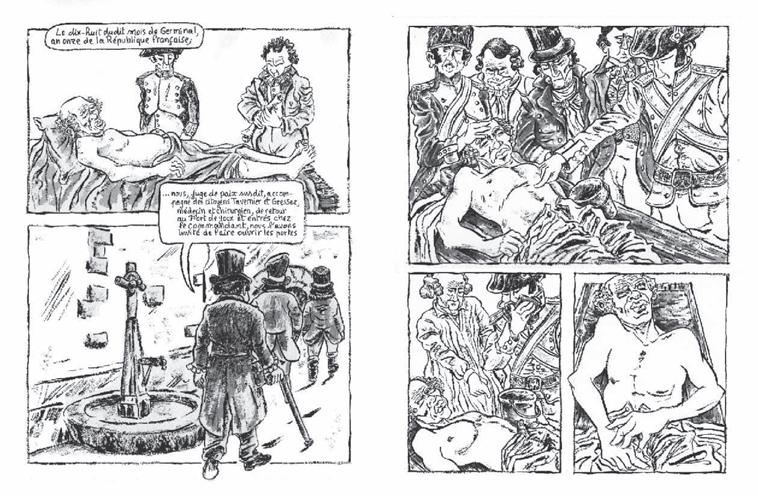

Vincent Farasse and Clotka
La Poussette
[The Pushchair]

Paris. The destinies of twelve characters of various ages and varying social status, including a checkout girl, a nurse and a CEO, are altered by an encounter with a pushchair. And not any old pushchair – the New-Epsilon is the Roll Royce of pushchairs and will set you back a week’s salary on the minimum wage. When 10-year-old Sarnia happens to see it in an ad, she is transfixed. So when she sees one the same evening in a park, imprudently left unsupervised by its owner, she wastes no time in swapping the clapped-out old pushchair she is pushing her little brother in for this coveted new model...
Vincent Farasse is an author, theatre and film director, actor and scriptwriter. His plays are published by Actes Sud-Papiers. Following on from Les Représentants (2022) and Des vies multiples (2025). La Poussette is his third comic book.
Clotka, the pseudonym of Clotilde Szymanski, is a French illustrator and comic book author whose work is mainly aimed at a young readership. La Poussette is her first comic book for adults.
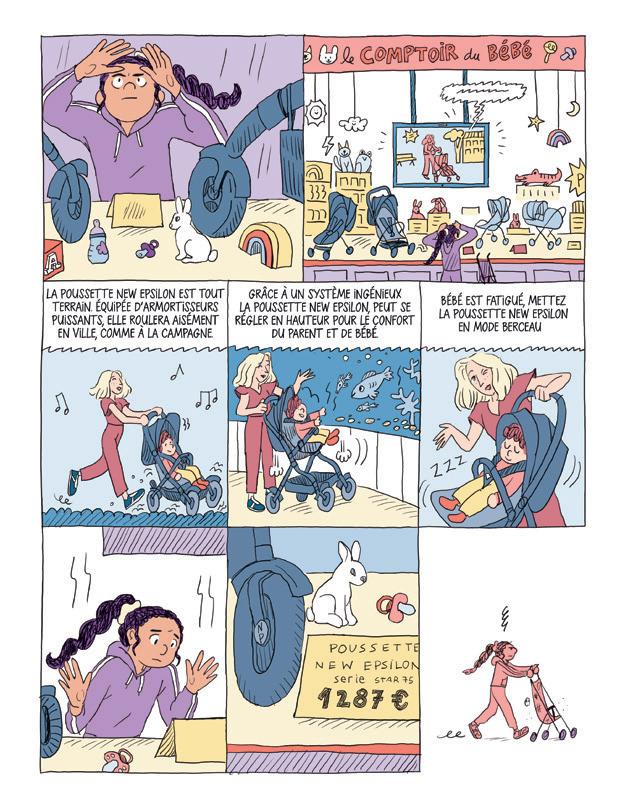




Nonfiction…
Essay. 10
> les routes de l’après.
Aline Cateux , Mostar : ceci n’est pas une ville. 10
> domaine du possible.
Charlène Descollonges, Eaux vives. 11
Nicolas Chaudun , La Cavalcade des princes 11
> errance & picard - éclairages. 30
Monique Goullet et Michel Parisse, Apprendre le latin médiéval 12
Pascal Charvet , Cynthia, Romaine libre. 12
Nature. 13
> système terre.
François Prouteau, À l’origine des sciences de l’Anthropocène 13
Léa Bismuth , Étoiles communes. 13
Health. 14
> questions de santé.
Aline Mercan , Guérir. 14
Clémence Marque, Faire sans. 14
Practical book. 15
Stéphanie Brillant , Tout ce qu'il faut savoir pour arrêter de foirer ses relations 15
> je passe à l’acte.
Flora Clodic-Tanguy, Vivre en permaculture 16
> Les Routes de l’après
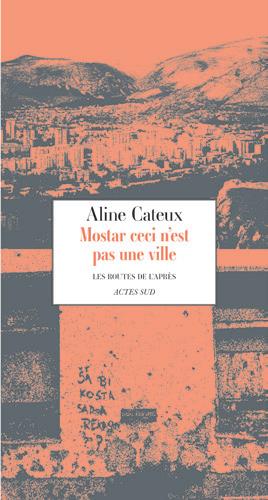
Aline Cateux
Mostar : ceci n’est pas une ville
[Mostar – This Is Not a City]
Ever since first discovering Mostar in 1999 when working with an NGO, Aline Cateux has regularly returned there to live and work. During her long walks through this city that was the most devastated by the war in Bosnia and Herzegovina, she takes in neighbourhoods in ruins, the old bridge (a symbol of unfinished reconstruction), the Partisan Memorial Cemetery (an anti-fascist symbol now targeted by nationalist vandals) and a factory that was once a showcase for Yugoslavian industrial power (but now a symbol of the corruption of the local political elite). Mostar, still divided and yet eternally fascinating, possesses a beauty that cannot be categorised and a population remarkable for their tenacity. They bemoan the disappearance of the city they loved, so what is this urban space in which they continue to live?
An expert on Bosnia and Herzegovina, Aline Cateux is an anthropologist and a doctor of political and social science. She has made a series of radio documentaries on the post-war period in the country (France Culture, May 2025), her research focusing on the erasing of memories and the modes of collective action in contested spaces. She divides her time between the Loire region of France and Sarajevo.
The new ‘Les Routes de l’après’ collection
When a conflict breaks out, the world takes a passing interest and then moves on. But what actually happens after the guns go silent?
The goal of the ‘Les Routes de l’après’ collection, the brainchild of the journalist and documentary-maker Anne Poiret, is to continue the story after the international media have decamped, focusing on that grey zone which is no longer really a war but can hardly be described as peacetime. Disarming yesterday’s combatants, locating the disappeared, overcoming trauma, co-existing with one’s former persecutors, reintegrating child soldiers, inventing a nation, trying crimes, ensuring that the past is not forgotten… All of these things revolve around a fundamental question: how to live on after the horror? This post-war phase is a nexus of complex challenges faced amid a backdrop of ruins and suffering. But it also affords insights into what led to the conflict in the first place and can help us to identify the first signs of other wars that may be around the corner.
Charlène Descollonges
Eaux vives
pour une hydrologie régénérative
[Reviving Water Cycles – A Plea for Regenerative Water Management]

Regenerative water management offers regional authorities an essential weapon in their battle against climate change and temperature extremes. Drawing on ancestral techniques and savoir-faire, it promotes the harmonious co-existence of humans and other living creatures who live in the same drainage basin and share its water resources.
Charlène Descollonges is a water engineer and co-founder of Pour une Hydrologie Régénérative, an association that works to revive water cycles at a regional level to help combat droughts, floods and soil erosion. She is based in Savoie in southeastern France.
Nicolas Chaudun
La Cavalcade des princes
Cheval et pouvoir
[The Princes’ Cavalcade – Horses and power]
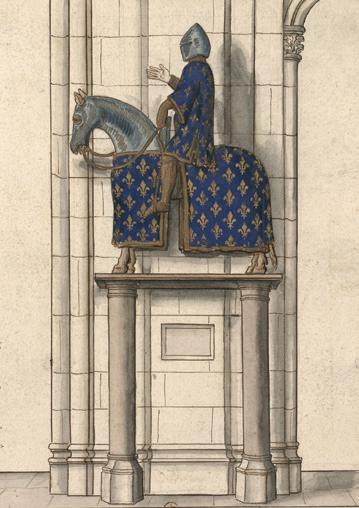
Horses have been associated with princes since time immemorial, the mastery of the art of horseriding being equated to the capacity for good governance. Originally much sought-after game for primitive clans, it wasn’t until much later that horses became an instrument of migrations and ultimately of conquests. The equation was simple: no fleet-footed steed, no conquests. And no conquests meant no power. Since the dawn of civilisation, horses have thus been synonymous with victory, and the knight has been assimilated to the leader. This might seem to rob the animal of its charm, but it is nevertheless the most fruitful perspective to adopt if we are to appreciate the key place horses have occupied in our civilisation and our imaginations, not least as a servant of our ambitions.
A writer, publisher, documentary-maker and art critic, Nicolas Chaudun is the author of some twenty books, including L’Été en enfer and Le Brasier, two award-winning historical narratives. He has taken a particular interest in artistic representations of horses and the place they occupy in our civilisation, these themes being the subject of La Majesté des centaures (Actes Sud, Prix Pégase 2007).
10 × 19 cm / 160 pages February 2026
> Domaine du possible
11,5 × 21,7 cm / 192 pages February 2026
> 16-pages colour insert. Visuel provisoire
18 × 26 cm / 216 pages
January 2026
> > Éclairages

Monique Goullet et Michel Parisse
Apprendre le latin médiéval
Manuel pour grands commençants
[Learn Medieval Latin – A manual for absolute beginners]
The fruit of extensive, hands-on teaching experience, this manual consisting of 23 lessons is designed to provide those who have never learnt Latin with the basics they need to understand and analyse Latin source texts from the Middle Ages. It will also be invaluable to those who have only studied the language through classical texts, introducing them to the innovations and variety of medieval Latin.
Monique Goullet holds a teaching diploma in classical studies and is a researcher at the prestigious CNRS. She wrote her thesis on the work of Hrotsvita de Gandersheim.
Michel Parisse is a lecturer in medieval history at the Sorbonne whose research has focused in particular on locating medieval charters and analysing their genesis.
14,5 × 21 cm / 224 pages
February 2026
> > Éclairages






































































Pascal Charvet
Cynthia, Romaine libre Élégies amoureuses de Properce
[Cynthia the Free-Spirited Roman –The love elegies of Sextus Propertius]
The dazzling story of Sextus Propertius and his lover Cynthia, even if it is a fiction, is fundamentally true to life, and the poet’s voice toys delightfully with the ambiguous relationship between poetry ad reality. Like many Roman women from wealthy families in the late 1st century BC, Cynthia is free both by status and in her choice of lovers. She is also an educated woman and a talented poet. Sensual, seductive and libertine by conviction, she introduces us to the banquets and the streets of Rome, where, despite living in a male-dominated world, she consistently demands equality and reciprocity in the pleasures of love. It is this free-spirited and elusive Cynthia whom Pascal Charvet brings back to life in this book.
Pascal Charvet teaches classical languages to undergraduates preparing the entrance exam for France’s prestigious grandes écoles. He is also a translator and the author of several books on the Ancient World. His original edition and translation of Cynthia. Élégies amoureuses de Properce (Imprimerie nationale, 2003) has been thoroughly updated and expanded for Actes Sud under the title Cynthia, Romaine libre
17 × 24 cm / 64 pages
François Prouteau À
“La planète double face : science & société”
l’origine des sciences de l’Anthropocène
Face science : comprendre la Terre à partir de la traduction d’un article scientifique.
L’odyssée des glaciologues en Antarctique (1957-2025)
Face société : changer le monde grâce à son interprétation par un chercheur francophone. Ni plus, ni moins.
[The Origins of Anthropocene Science – The glaciologists’ Antartica odyssey (1957-2025)]
À desl'origine savoirs de l'Anthro pocène.
L’odyssée des glaciologues en Antarctique
Based on the translation of an article on how the history of greenhouse gases is recorded in polar ice (Science, 1993) by Dominique Raynaud and his colleagues (including Jean Jouzel and Claude Lorius)
In 1965, the researchers Claude Lorius and Bill Budd were enjoying an apéritif in Antarctica. They had added to their whiskies a few pieces of ice from the core samples they had extracted that day from a hundred metres below the surface. As he watched the air bubbles being released from the ice and making his drink look like champagne, Lorius had the sudden intuition that they might contain a sort of archive of the atmosphere and its various components such as oxygen and carbon dioxide. It turned out to the beginning of a remarkable scientific and geopolitical odyssey as they went on to work with American and Russian colleagues and to revolutionise our understanding of the 400,000 years of Earth history since the advent of Homo sapiens. And it was the discoveries made by these brilliant scientists at Russia’s research station in Vostok in eastern Antarctica that helped us to better understand anthropogenic climate change and the dangerous current trajectory of Earth systems in this Anthropocene era.
François Prouteau is a teacher of education sciences and vice-president of social science studies at the Catholic University of Lille. For the last 30 years, he has been promoting the development of higher education in Europe, Africa, the Americas and Asia. From 2013 to 2023, he was executive president of the lay Christian association Fondacio. He works in Lille and lives in Angers.
Léa Bismuth
Étoiles communes
Vers une écologie cosmique
[Stars as a Common Good – The path to a cosmic ecology]
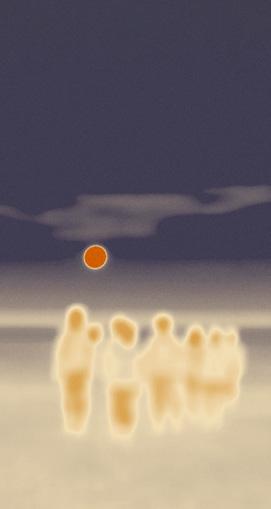
In the same vein as Estelle Zhong Mengual’s Apprendre à voir, Léa Bismuth serves up a meditation – blending contemporary art history, philosophy, poetry and science – on our relationship with the cosmos and the stars since the 19th century to the present day. The seemingly simple action of looking at the stars could ultimately become eminently political, for the heavens are a common good.
Léa Bismuth is a doctor of art theory (EHESS), art critic, visual arts teacher and exhibition curator. She is also the author of L'Art de passer à l'acte (PUF. ‘Perspectives critiques’, 2024).
> Système Terre
11,5 × 21,7 cm / 192 pages January 2026
14 × 20,5 cm / 300 pages
February 2026
> Questions de santé

Clémence Marque
Faire sans
Les pénuries de médicaments qui menacent nos sociétés
[Doing Without – The Dangerous Shortage of Medicines]
Will we soon be forced to do without certain medicines? Why in recent years has the powerful pharmaceutical industry so often found itself short of medicines such as amoxicillin, paracetamol and Ozempic?
To understand and respond to the threats posed to our health systems and therefore society more widely, we need to take a closer look at the complex and usually opaque structure of the medicine supply chain and identify the blockages and weak links. Drawing on two decades of previous experience as a consultant in the pharmaceutical industry, Clémence Marque affords us a lucid and detailed insight into the workings of an industrial and scientific enterprise about which too little is generally known.
Clémence Marque is a doctor of pharmacy and graduate of HEC Paris. Having spent over 20 years as a consultant within the pharmaceutical industry, she now presides over the Adrascia association and works in the public sector at the University Centre for Primary Care and Public Health in Lausanne. This is her first book.
14 × 20,5 cm / 540 pages January 2026
> Questions de santé

Aline Mercan
Guérir
Visuel provisoire
une anthropologie de la guérison


Aline Mercan
Guérir
Une anthropologie de la guérison
[Healing – The Anthropology of Curing]
Aline Mercan’s project is vast and yet can be succinctly summarised: to define what healing means, in Western medicine and other traditions. Rather than establishing a hierarchy, this book accords the respect they merit to the inventive palette of tools and narratives that humankind has deployed to remain in good health or simply to survive. We meet miraculous survivors, surgeons, campaigners and herbalists, and encounter the first cancers to affect humans and the latest epidemics of modern times. A completely novel history of the human race emerges characterised by panaceas and mistaken convictions, scientifically developed prescriptions and psychedelic discoveries.
The author is not only a doctor herself but also an anthropologist and a former patient, and her original perspective reveals biomedicine for what it really is: one medical approach among many others which would benefit from recognising its own shortcomings in order to better understand and treat patients. In this profoundly humanist and hopeful book, she pleads for us to expand and refine our conception of the illnesses that sporadically assail us so that we can treat them more effectively and perhaps ultimately prevent them.
A doctor, practitioner of herbal medicine and medical anthropologist, Aline Mercan provides supportive care for cancer patients as well as teaching, conducting research and writing. She is the author of the Manuel de phytothérapie écoresponsable (Terre Vivante. 2021) and Soulager les douleurs chroniques ou aiguës (with Anne Dumolanl, Terre Vivante. 2023).
Stéphanie Brillant
Tout ce qu’il faut savoir pour arrêter de foirer ses relations
[Everything You Need to Know to Stop Screwing Up Relationships]
Are you looking for more fulfilling relationships? This book proposes a simple and effective method for transforming your relationships, friendships and professional dealings. Offering concrete advice and featuring enlightening illustrations, it shares with us the keys to relaxed interactions, empathising with others and establishing durable relationships based on trust. This illustrated guide will help you to better understand others ... and yourself.
A journalist, documentary-maker, TV presenter, producer and public speaker, Stéphanie Brillant has devoted the last seven years to exploring how to liberate individual potential. She directed the documentary Le Cerveau des enfants, un potentiel infini (2017) and has published three books with Actes Sud, including the bestselling L'incroyable pouvoir du souffle (2021).
16,5 × 22,5 cm / 256 pages February 2026
des résultats
Si
VOUS OBTENEZ UNE MAJORITÉ DE
Le fougueux Vous êtes intense et aimez que vos histoires d’amour aient du relief. Partir en week-end, agir sur un coup de tête, faire des surprises. L’amour plan-plan, ce n’est pas pour vous, vous avez besoin de vous sentir briller dans les yeux de votre autre car vous mettez du piment dans sa vie.
POINTS FAIBLES manque de sommeil, fatigue, stress
POINTS FORTS captivant et surprenant
VOUS OBTENEZ UNE MAJORITÉ DE
Le romantique
Vous aimez l’amour et vous le vivez dans votre tête, vous aimez ressentir et emmener l’autre dans vos sensations. Vous avez besoin de toucher le cœur de l’autre avec des attentions, et votre humeur s’effondre si elles ne sont pas reconnues.
POINTS FAIBLES hypersensibilité, facilement blessé POINTS FORTS prévenance et attention
Compatibilité relationnelle
Anxieux Anxieux
Au départ c’est fusionnel, cela fonctionne néanmoins sur le long terme le duo va se refermer sur lui-même et risquer d’étouffer.
Anxieux Désorganisé
Beaucoup de souffrance pour l’anxieux qui va subir les périodes d’éloignement, mais comme il est dépendant affectif il aura sans doute la capacité de tenir le coup.
Évitant Sécure
Cela peut fonctionner un temps, mais le sécure risque de se lasser de l’évitant qui ne veut pas s’engager et est coupé de ses besoins. Cependant, l’évitant fait parfaitement illusion, il peut donc très bien jouer la partition pendant des années. Au contact d’un sécure, tous les attachements insécures se sécurisent un peu.
Anxieux Évitant
C’est l’enfer pour l’anxieux, et une sinécure pour l’évitant. Ce sont toutefois des duos qui fonctionnent. Souvent, c’est un excellent terreau pour les relations compliquées.
Anxieux Sécure
C’est la meilleure alliance pour l’anxieux qui pourra mettre son style d’attachement en sommeil et se sentir bien.
Sécure Sécure
L’amour heureux, nourricier et sécurisant, ces relations peuvent tenir dans la durée sans perdre de leur saveur et permettre de découvrir l’Amour avec un grand A.
VOUS OBTENEZ UNE MAJORITÉ DE Le dauphin Vous adorez être nourricier pour la famille et aux petits soins pour l’autre, être sûr qu’il a ce qu’il lui faut, qu’il est bien. Votre monde s’écroule si vous ne recevez pas de remerciements pour tout ce que vous faites et que votre autre n’est pas comblé.
POINTS FAIBLES l’excès, tendance à basculer dans le trop
POINTS FORTS fiabilité, soutien
VOUS OBTENEZ UNE MAJORITÉ DE
Le terrien Vous êtes d’humeur égale, vous aimez les choses simples et la stabilité. Vous aimez partager le quotidien, et créer des souvenirs. Vous êtes déstabilisé si la vie va trop vite, si les moments simples ne semblent pas satisfaire votre autre.
POINTS FAIBLES peur de l’inconnu, croyances limitantes
POINTS FORTS stabilité, humilité




















LA GRILLE DES MATCHS
Selon que les cœurs sont plus ou moins remplis et vibrants, vous pouvez mesurer votre compatibilité “naturelle”. En effet, ces correspondances ont été établies sur le principe des blessures des différents profils. Certaines relations appuient sur nos blessures quand d’autres les colmatent ou encore créent les conditions favorables à notre guérison !
LÉGENDE :





Si comme plus de la moitié de la population vous avez un attachement insécure et que vous souhaitez évoluer pour mieux vivre l’amour et vous attacher sans heurts, c’est possible. Amir Levine, spécialiste américain qui a étudié l’attachement, explique qu’il faut compter quatre ans pour changer d’attachement . Il existe des thérapeutes qui travaillent sur des thérapies d’attachement, leur objectif est de créer un lien d’attachement avec leur patient et en quelque sorte de renouer la relation de sécurisation qui leur a manqué enfant. Vous pouvez aussi vous entourer de personnes avec des attachements sécures afin de projeter une nouvelle croyance sur la relation du fait de ces expériences. Au travail, dans vos amitiés, évidemment dans votre vie amoureuse, choisir des personnes avec des attachements sécures est sur le long terme
un gage de santé. On oublie trop souvent que les relations chaotiques ont un coût physique. Par le physique, on peut aussi améliorer la qualité de ses relations car en mettant le corps en sécurité il devient possible d’aimer. C’est pourquoi travailler sur sa respiration est une riche idée lorsque l’on souhaite faire évoluer son attachement. Le souffle permet de consolider ou réentraîner la maturité émotionnelle, en effet certaines zones du cerveau dont dépendent nos capacités de régulation peuvent être “musclées” par les techniques de respiration. Par ailleurs, l’équilibre du système nerveux est favorisé, ce qui permet de faire baisser le niveau de menace sociale. Et quand un être ne se sent pas menacé par un autre dans des circonstances qui ne sont pas objectivement menaçantes, il développe un attachement sécure. La respiration permet de transmuter la méfiance en confiance.
Vient ensuite la confrontation avec le réel, qui peut heurter de plein fouet toutes les projections que vous aviez pu vous forger. Ça ne se passe pas comme prévu. Même si vous tenez bon, ça ne convient pas… Dans le développement de votre projet d’écolieu, vous avez oublié une chose essentielle : prendre soin de vous et/ou de vos proches. Il est rarement trop tard pour réagir, bouger, changer, même si chaque choix peut bien sûr avoir des conséquences matérielles et financières.
“Peut-on inverser la tendance de notre culture, la remettre dans la spirale du vivant ?
Peut-on développer une autre façon d’être humains sur cette Terre ? Et si oui, comment1 ? ” Marine Simon
SAVOIR RENONCER POUR SE CHOISIR
“Après avoir vendu ma maison bordelaise et fait de gros travaux, je me suis enfin installée sur la ferme de 28 hectares que j’avais achetée en Charente. Mais il y avait un hic : développer un projet collectif de cette ampleur ne me permettait pas de préserver ma zone 00 de permacultrice… En trois ans de remise en état en tout genre, je me suis épuisée et je ne m’y retrouve plus.
Je dois changer de direction. J’ai décidé de lâcher ce rêve pour en construire un autre… Je vais prendre mon temps pour élaborer l’étape d’après. Je sais que j’aurai du mal à retrouver une telle biodiversité. Mais je me choisis, moi. J’emporte tout ce que j’ai appris, compris, de la permaculture, de moimême et de ce que je souhaite éviter (et choisir) à l’avenir.”
Pauline Dreux-Palassy, coach et facilitatrice de résilience
1. Marine Simon, Tout tourne rond sur cette Terre, nous sommes les seuls à l’ignorer Yves Michel, 2021.
14 x 19 cm / 64 pages January 2026
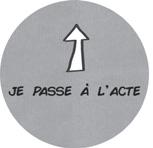


Flora Clodic-Tanguy Vivre en permaculture
Illustrations by Victoria Roussel
[Living the Permaculture Experience]
Permaculture is about much more than the theory and practice of gardening – it is a genuine life philosophy inspired by the living world. Indeed, permaculturists use the world ‘culture’ in its original dual sense to denote not only an ensemble of material and ideological phenomena that characterise an ethnic group, nation or civilisation, but also the cultivation of the land to grow vegetables.
Flora Clodic-Tanguy deploys her journalistic talents to promote permaculture projects and has assisted with crowdfunding efforts for initiatives such as the awareness-raising magazine Yggdrasil, the film Un monde nouveau, the book Géoconscience and the educational institution Sator. She is also the author of Nos voies de résilience (Massot, 2021).
Victoria Roussel lives in Besançon in the Burgundy region. Fascinated by nature, her work reflects her unconditional love of the living world. Her fertile imagination conjures up colourful landscapes and encounters between fantastical characters. This is her third contribution to the ‘Je passe à l’acte’ collection.
Arts…
Cinema. 20
> actes sud | institut lumière.
Christine Leteux , Maurice Tourneur, réalisateur sans frontières 20
Music. 21
> actes sud musiques.
Jean-Philippe Thiellay, Carl Orff 21
Photography. 22
> photo poche.
Raymond Depardon (new edition). 22
Marc Riboud (new edition). 23
13,5 × 23 cm / 448 pages February 2026
> coedition Actes Sud / Institut Lumière Visuel provisoire
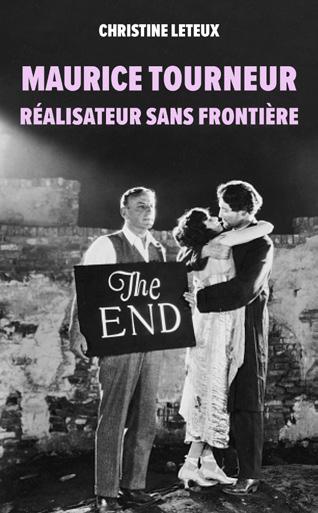
Christine Leteux
Maurice Tourneur, réalisateur sans frontières
[Maurice Tourneur, A French Filmmaker in America])
In 1914, an unknown French filmmaker pitched up in New York. Just four years later, Maurice Tourneur had become one of the America’s most renowned film directors, in the same bracket as D. W. Griffith and Cecil B. DeMille. He directed many of the leading American and French stars, and was admired and detested in equal measure. From his early days as a painter to his career in the talkies, this biography explores the life and work of a stand-out director of the 20 th century and a master of pictorialism. He believed that ‘cinema should reflect an individual’s philosophy, feelings and emotions, as opposed to resembling a factory production line’.
Christine Leteux is the author of Albert Capellani, cinéaste du romanesque (La Tour Verte, 2013) and Continental Films. Cinéma français sous contrôle allemand (La Tour Verte, 2017), which won the Syndicat Français de la Critique de Cinéma prize. She was also the recipient of the Prix Raymond Chirat in 2023 for her work as a historian.
Jean-Philippe Thiellay
Carl Orff
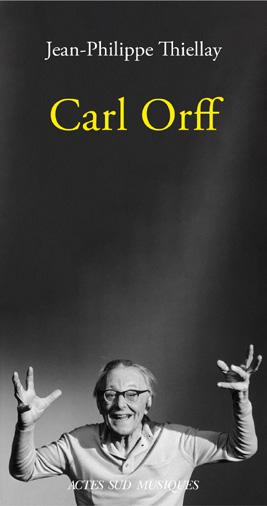
Everyone knows the opening bars of Carmina Burana, which has become a fixture of pop culture, but people are much less familiar with the life of its composer. The career of Carl Orff, who was born under Emperor Wilhelm in 1895 and died in 1982 shortly before Helmut Kohl came to power, spanned the 20th century and mirrored Germany’s moments of glory as well as its periods of darkness. He met Richard Strauss, Arnold Schönberg, Bertolt Brecht, Thomas Mann and Wieland Wagner while resolutely following his own creative path. Neither an arch-conservative nor a radical champion of the avant-garde, he loved theatre and the culture of Antiquity. His uneven output ranged from small-scale operas to ambitious ancient tragedies in Greek and Latin. Though he focused on his music and his business affairs, never becoming a member of the Nazi party or expressing antisemitic views, he nevertheless reached an accommodation with the Hitler regime to avoid the persecution experienced by so many of his fellow composers. Carmina Burana, a singular yet hugely popular work, has achieved global iconic status, and his explorations of non-European instruments and traditions continues to influence the teaching of music around the world to this day.
A member of the Council of State (which advises the French government) and a former deputy director of the Opéra National de Paris (2014-2019) and president of the Centre National de la musique (2020-2025), Jean-Philippe Thiellay is a lawyer specialising in the cultural and creative fields. His has published three books with Actes Sud (Bellini in 2013, Meyerbeer in 2018 and Rossini in 2019), two of which he co-wrote with his father Jean Thiellay, and two essays on the future of opera (L’Opéra s'il vous plaît. Plaidoyer pour l'art lyrique, Les Belles lettres, 2021; En finir avec les idées fausses sur l'opéra, L’Atelier 2025). He is a regular guest on the ‘La Tribune des critiques de disques’ record review show on France Musique radio, and is also president of the Opera for Peace association. He divides his time between Paris and Marseille.
10 × 19 cm / 208 pages January 2026


12,5 × 19 cm / 144 pages
Photo Poche no 81 January 2026
> PHOTO POCHE

Raymond Depardon
Introduction by Michel Guerrin
Raymond Depardon occupies a unique place in the world of contemporary imagery. A world-renowned photographer and filmmaker, he has put together a body of work over the course of several decades that encompasses long-term projects, black and white, colour, documentary films and fiction. His passion for technique, his ongoing explorations of ethics and aesthetics, and the autobiographical elements he incorporates are defining characteristics of an approach that also makes room for the spoken and written word. He is consciousness on the move, in constant effervescence, and a sterling example to follow.
Michel Guerrin is editor-in-chief of Le Monde newspaper, having previously run its photography and culture departments and presided over the ‘Culture et idées’ supplement, which he himself created.

Marc Riboud
Introduction by Marc Riboud
In 1953, the international reporter Marc Riboud (1923-2016) got a photo published for the first time. It was an image of a decorator perched precariously on the Eiffel Tower and it appeared in Life magazine. At the invitation of Henri Cartier-Bresson and Robert Capa, he joined the Magnum agency shortly afterwards. He subsequently travelled extensively, including to India, China and the USSR, and covered the independence movements in Algeria and Sub-Saharan Africa. He visited South Vietnam and was also one of the few photographers to be allowed into North Vietnam. In the 1980s, he returned regularly to the east and far-east.

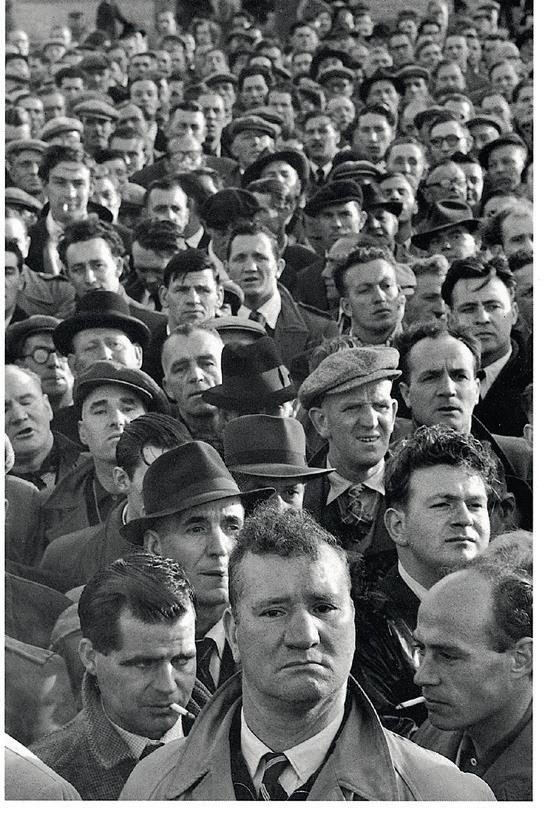
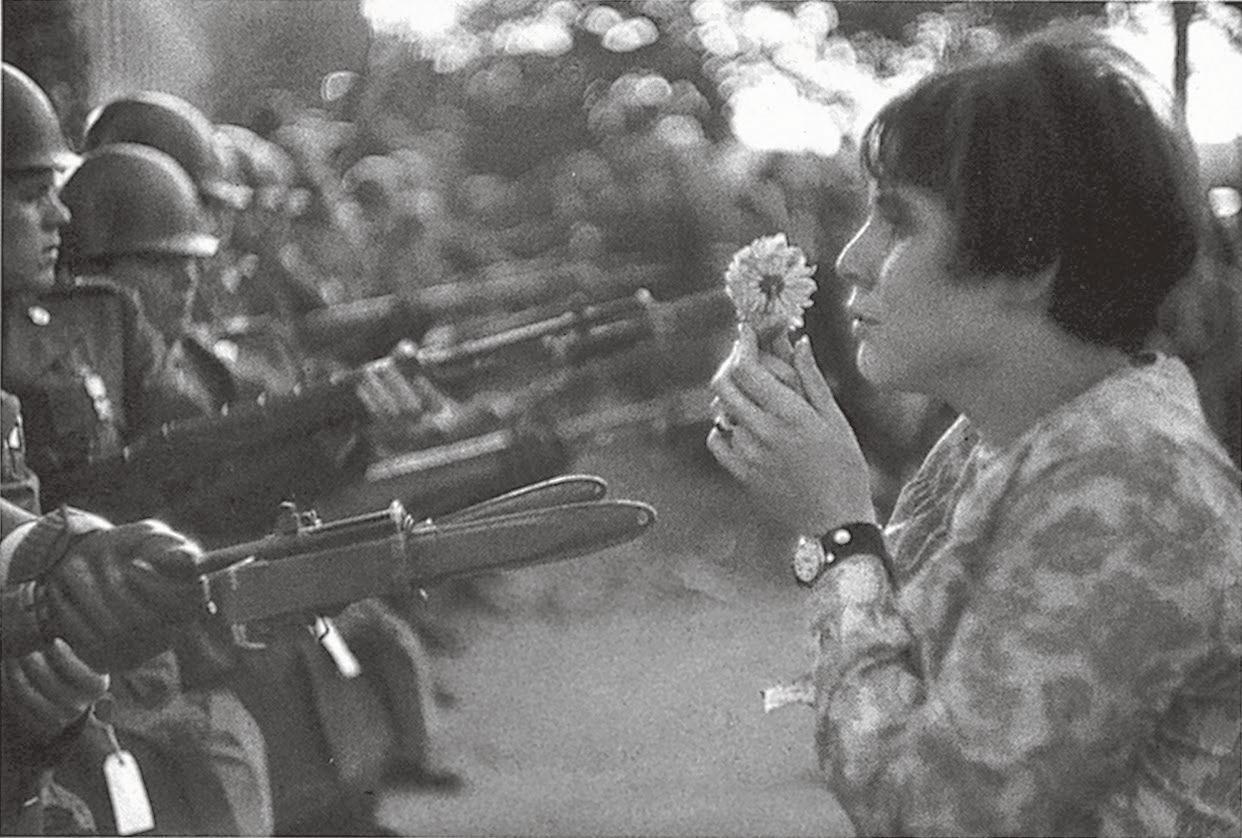
60-62, avenue de Saxe
75015 Paris
tél. : 01 55 42 63 00
Place Nina-Berberova
13200 Arles
tél. : 04 90 49 86 91
Foreign Rights
Isabelle Alliel
tél. : 04 90 49 56 69 / i.alliel@actes-sud.fr
Sandra Martel
tél. : 04 88 65 90 35 / s.martel@actes-sud.fr

